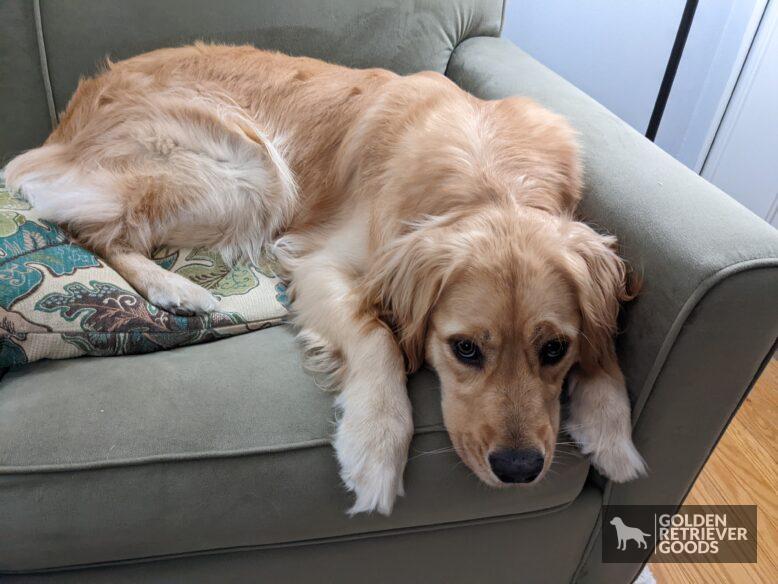When Do Golden Retrievers Shed the Most?

Golden Retrievers are one of the most popular dog breeds in the world, loved for their friendly personality and gorgeous golden coat. However, that beautiful coat comes with a downside – shedding. All dogs shed, but Golden Retrievers have a reputation for being heavy shedders.
So when do Golden Retrievers shed the most? And what can you do to handle all that fur effectively? Let’s find out.
Understanding The Shedding Cycle
All dogs go through a natural shedding cycle where old hair falls out and new hair grows in. This process is more noticeable during seasonal changes because they typically drop their undercoat twice per year: once in spring as the weather warms up and again in fall as it cools down.
However, some factors can trigger excessive shedding outside of these two seasons, such as pregnancy or illness. You might also notice increased shedding if your pup is stressed or anxious due to changes within your household like moving houses or introducing new pets into the family.
Read more: How Fast Are Golden Retrievers?
When Do Golden Retrievers Shed The Most?
Golden retriever puppies begin losing their puppy coats between six months and one-year-old age range, which means this breed’s grooming needs change significantly from there on forward.
Adult golden retrievers heavily shed twice annually after winter (January-February) and summer (June-July). These periods usually last between three weeks to four months depending on several factors including diet quality; hormonal balance; overall health status; environment temperature fluctuations among others.
However, It’s important to note that every dog will be different – even within the same breed – so don’t be surprised if your furry friend deviates slightly from this schedule.
If you’re unsure about how much your dog should be shedding at any given time feel free to consult with an experienced groomer who will help give advice based on his/her vast experience dealing with various breeds over time.
Read more: When Do Golden Retrievers Lose Their Baby Teeth?
Managing Excessive Shedding
Grooming is the key to managing excessive shedding in Golden Retrievers. Brushing your dog’s coat regularly helps remove loose fur and prevents it from matting or tangling. You should be brushing your pup at least once a week, but during heavy shed periods, you may need to brush them daily. Depending on your Golden Retriever’s coat stage, you may need to brush more or less often than usual.
When grooming your golden retriever, it’s important to use a high-quality brush designed for their hair type. A slicker brush with fine wire bristles will work well on most coats while an undercoat rake can help get rid of that thick undercoat during heavy shedding seasons.
Bathing can also help reduce shedding by removing dirt and dander from the coat. However, too much bathing can strip away natural oils leaving your dog’s coat dry and brittle which leads to increased shedding as the skin tries to compensate for lost moisture.
Finally, ensuring that they are consuming a healthy diet rich in nutrients like Omega-3 fatty acids is another step towards reducing excess shedding
Conclusion
In conclusion, Golden Retriever sheds heavily twice annually after winter (January-February) and summer (June-July). Still remember every dog has different needs when it comes to maintaining their coats so don’t feel alarmed if you see some variation between dogs within this breed.
Managing excessive shedding requires regular grooming using suitable brushes as well as feeding good quality food with adequate nutrient content among other things mentioned above. By following these tips consistently while keeping an eye out for any unusual changes in behavior or health status – you’ll be able to keep your furry friend looking great all year round!
Related Reading
- How Fast Are Golden Retrievers?
- Why Do Golden Retrievers Lick So Much?
- How Much Do Golden Retrievers Sleep?
- Why Do Golden Retrievers Shed So Much? Understanding Your Furry Friend’s Coat
- Why Do Golden Retrievers Have a Bump on Their Head?
We want to remind our readers that the articles or content found on goldenretrievergoods.com do not constitute nor replace professional veterinary advice, diagnosis, or treatment. The information provided on our website is purely educational and informational, and should not be used as a substitute for advice from a licensed veterinarian.

